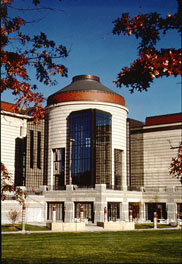|
|||
|
As far as I know Joy Marcus is the only one to have made a concentrated effort at gathering and recording genealogical data on our family. Her research has been very helpful and has furnished me with certain facts that I could not have obtained otherwise. I only regret that others did not do the same! Those among us whose grandparents were born before the turn of the century did not take the opportunity to interview them about their early lives and set it down in writing. Consequently, we know surprisingly little about the “Old Country” in spite of the fact that some members of our family made the journey to the United States only three generations before me! The best source on the origins of the Grossman family is, of course, the Grossmans themselves and their blood relatives. In fact oral testimony is the single most important source for this project. Hearsay and fragmentary legends, passed down from one generation to the next, almost always have some basis in fact. It has happened to me several times that two or more of my interviewees who had never met corroborated each other’s stories. I have thus been able to validate oral accounts that otherwise might have been dismissed as myths. After personal testimony the second most important genealogical source is official documentation from city, state, county and federal archives. The Minnesota Historical Society in St. Paul has a well-organized research facility which possesses copies of the 1895 Minnesota census, the Federal censuses of 1900 and 1920, and naturalization certificates issued in Twin Cities counties.
Minnesota Historical Society, St. Paul headquarters Also available are old city directories, maps, tax records, newspapers and photographs. Legal documents such as probate and marriage records can be obtained through the Hennepin County Courthouse. One can write to the federal government for a variety of other records, including passenger lists from ships that transported immigrants to American ports. These and other archival sources have provided me with much valuable information. Since all of our ancestors are Jewish a number of other sources were available to me. For example, records from Mikro Kodesh, the synagogue most frequented by our forebears, are now in the hands of B’nai Emet and can be examined upon request. These and other specifically Jewish material, such as articles from past issues of the American Jewish World, reveal some very significant facts about our family. Cemetery records from Minneapolis Hadras and epitaphs on tombstones often provide precise birth and death dates, and sometimes the Hebrew names of previous generations of ancestors. The Jewish Historical Society in Saint Paul also has some useful materials, as well as a growing photographic archive. Finally, I cannot emphasize enough the significance of new research opportunities that are being made possible by the Internet. It is truly amazing that with my little Toshiba laptop computer, from the remoteness of my apartment in the middle of Italy, I was able to download maps of the czarist Russian Empire, images of our ancestral town in Ukraine, a drawing of the synagogue of that town before its destruction, precious descriptions of the town’s cemeteries, and other information. Furthermore, I was able to contact people who had actually visited the town, and still others whose ancestors also came from there! Special mention and thanks go to Paul W. Ginsburg, whose website www.sudilkov.com contains a wealth of valuable information which I found useful for this essay. At this moment entire genealogical research libraries are being made available on-line, as are the archives of thousands of institutions all over the planet. There seem to be no limits to the potential of this powerful new tool. |
